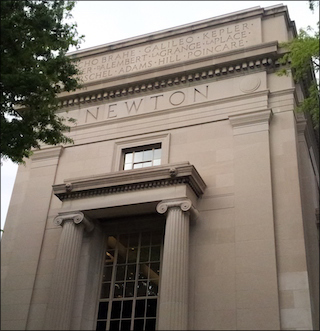

Issac Newton is honored on the facade of Killian Court at MIT. Newton developed most of the concepts studied in classical mechanics. (Photo courtesy of Dr. Michelle Tomasik.)
Instructor(s)
Prof. Deepto Chakrabarty
Dr. Peter Dourmashkin
Dr. Michelle Tomasik
Prof. Anna Frebel
Prof. Vladan Vuletic
Level
Undergraduate
OCW Scholar courses are designed specifically for OCW's single largest audience: independent learners. These courses are substantially more complete than typical OCW courses, and include new custom-created content as well as materials repurposed from previously published courses. Click here for a complete list of OCW Scholar courses.
Course Description
Course Features
Course Description
This first course in the physics curriculum introduces classical mechanics. Historically, a set of core concepts—space, time, mass, force, momentum, torque, and angular momentum—were introduced in classical mechanics in order to solve the most famous physics problem, the motion of the planets.
The principles of mechanics successfully described many other phenomena encountered in the world. Conservation laws involving energy, momentum and angular momentum provided a second parallel approach to solving many of the same problems. In this course, we will investigate both approaches: Force and conservation laws.
Our goal is to develop a conceptual understanding of the core concepts, a familiarity with the experimental verification of our theoretical laws, and an ability to apply the theoretical framework to describe and predict the motions of bodies.
Other Versions
Other OCW Versions
OCW has published multiple versions of this subject. ![]()
- 8.01L Physics I: Classical Mechanics (Fall 2005)
- 8.01X Physics I: Classical Mechanics with an Experimental Focus (Fall 2002)
Archived versions: ![]()



